#freertos
Explore tagged Tumblr posts
Text
FreeRTOS on i.MX 9352 M33 Core – Real-Time in Action!
Take your embedded systems to the next level with the Forlinx OK-MX9352-C development board. Learn how to build real-time applications on NXP's Cortex-M33 core using FreeRTOS.
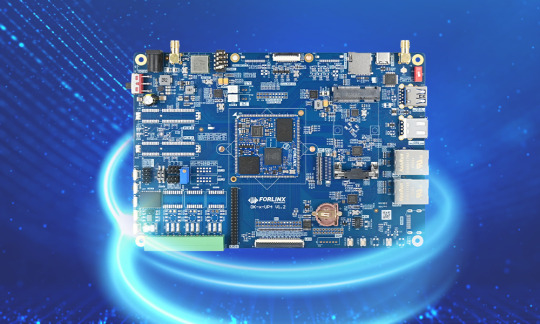
Featured demos include:
✅ Task + Queue communication ✅ Software timers & semaphores ✅ UART, I2C, SPI under FreeRTOS ✅ System tick hook & exception handling
Perfect for edge AI & industrial control.
0 notes
Text
#ECC memory#FreeRTOS#IDEs#MCU#EmbeddedSystems#IoT#ArmCortexM23#CostPerformance#GigaDevice#Electronics#Timestech#electronicsnews#technologynews
0 notes
Text
Key Benefits of Windows 10 for Users
Windows 10 is a dependable and flexible operating system that can be used for both personal and business purposes. A number of important features that improve security, performance, and usability are included in the official version.
#windows 10#windows user#operating systems#windows 10 download#microsoft defender#microsoft windows#freertos#microsoft windows 10 download#mac os#windows 8.1#windows 10 64 bit
0 notes
Text
인피니언, 차량용 AURIX MCU에 FreeRTOS 지원
안정적인 오픈 소스 환경에서 애플리케이션을 빠르게 구축할 수 있다 인피니언의 차량용 MCU AURIX™ TC3x 인피니언 테크놀로지스(코리아 대표이사 이승수)는 AURIX™ TC3x 마이크로컨트롤러(MCU)에 FreeRTOS 지원을 추가했다고 밝혔다. 마이크로컨트롤러에서 실행되는 핵심 소프트웨어 구성 요소인 RTOS는 하드웨어 및 소프트웨어 리���스를 효율적으로 관리하여 작업을 적시에 안정적으로 실행할 수 있도록 한다. 인피니언의 AURIX TC3x MCU는 자동차 및 산업용 시장의 엄격한 요구 사항을 충족하는 ASIL-D/SIL-3을 준수하도록 개발되었다. 고성능 TriCore™ 아키텍처로 구동되어 실시간 기능, 고급 안전 기능 및 기능 안정성을 제공하므로 까다로운 애플리케이션에…

View On WordPress
0 notes
Text

Practical Multitasking Fundamentals with FreeRTOS for ESP32
Why would you develop your own Real-Time Operating System (RTOS) and your application when the proven FreeRTOS software is available free of charge? Why not start with a proven foundation? FreeRTOS is a market-leading real-time operating system (RTOS) for microcontrollers and small microprocessors.
1 note
·
View note
Note
Hi Lan! Hope your wait isn't too long, if you had a choice of operating system, what would it be? Would you take an era-appropriate chassis as well?
Ooooo that's a toughie. I've always been a debian and arch girlie but something like freeRTOS seems more suited for the role. Arch memes and stereotypes aside it probably suits me more(go fast, east ass, leave a beautiful buggy mess) so lets go with that.
Chassis wise I'd love something a lil bulky and industrial, you know the kind with lots of exposed maintenance access, room for modifications and mounting points. Maybe with some aftermarket transparent panels here and there or added lighting and displays
20 notes
·
View notes
Text
Building Your Own Operating System: A Beginner’s Guide
An operating system (OS) is an essential component of computer systems, serving as an interface between hardware and software. It manages system resources, provides services to users and applications, and ensures efficient execution of processes. Without an OS, users would have to manually manage hardware resources, making computing impractical for everyday use.

Lightweight operating system for old laptops
Functions of an Operating System
Operating systems perform several crucial functions to maintain system stability and usability. These functions include:
1. Process Management
The OS allocates resources to processes and ensures fair execution while preventing conflicts. It employs algorithms like First-Come-First-Serve (FCFS), Round Robin, and Shortest Job Next (SJN) to optimize CPU utilization and maintain system responsiveness.
2. Memory Management
The OS tracks memory usage and prevents memory leaks by implementing techniques such as paging, segmentation, and virtual memory. These mechanisms enable multitasking and improve overall system performance.
3. File System Management
It provides mechanisms for reading, writing, and deleting files while maintaining security through permissions and access control. File systems such as NTFS, FAT32, and ext4 are widely used across different operating systems.
4. Device Management
The OS provides device drivers to facilitate interaction with hardware components like printers, keyboards, and network adapters. It ensures smooth data exchange and resource allocation for input/output (I/O) operations.
5. Security and Access Control
It enforces authentication, authorization, and encryption mechanisms to protect user data and system integrity. Modern OSs incorporate features like firewalls, anti-malware tools, and secure boot processes to prevent unauthorized access and cyber threats.
6. User Interface
CLI-based systems, such as Linux terminals, provide direct access to system commands, while GUI-based systems, such as Windows and macOS, offer intuitive navigation through icons and menus.
Types of Operating Systems
Operating systems come in various forms, each designed to cater to specific computing needs. Some common types include:
1. Batch Operating System
These systems were widely used in early computing environments for tasks like payroll processing and scientific computations.
2. Multi-User Operating System
It ensures fair resource allocation and prevents conflicts between users. Examples include UNIX and Windows Server.
3. Real-Time Operating System (RTOS)
RTOS is designed for time-sensitive applications, where processing must occur within strict deadlines. It is used in embedded systems, medical devices, and industrial automation. Examples include VxWorks and FreeRTOS.
4 Mobile Operating System
Mobile OSs are tailored for smartphones and tablets, offering touchscreen interfaces and app ecosystems.
5 Distributed Operating System
Distributed OS manages multiple computers as a single system, enabling resource sharing and parallel processing. It is used in cloud computing and supercomputing environments. Examples include Google’s Fuchsia and Amoeba.
Popular Operating Systems
Several operating systems dominate the computing landscape, each catering to specific user needs and hardware platforms.
1. Microsoft Windows
It is popular among home users, businesses, and gamers. Windows 10 and 11 are the latest versions, offering improved performance, security, and compatibility.
2. macOS
macOS is Apple’s proprietary OS designed for Mac computers. It provides a seamless experience with Apple hardware and software, featuring robust security and high-end multimedia capabilities.
3. Linux
Linux is an open-source OS favored by developers, system administrators, and security professionals. It offers various distributions, including Ubuntu, Fedora, and Debian, each catering to different user preferences.
4. Android
It is based on the Linux kernel and supports a vast ecosystem of applications.
5. iOS
iOS is Apple’s mobile OS, known for its smooth performance, security, and exclusive app ecosystem. It powers iPhones and iPads, offering seamless integration with other Apple devices.
Future of Operating Systems
The future of operating systems is shaped by emerging technologies such as artificial intelligence (AI), cloud computing, and edge computing. Some key trends include:
1. AI-Driven OS Enhancements
AI-powered features, such as voice assistants and predictive automation, are becoming integral to modern OSs. AI helps optimize performance, enhance security, and personalize user experiences.
2. Cloud-Based Operating Systems
Cloud OSs enable users to access applications and data remotely. Chrome OS is an example of a cloud-centric OS that relies on internet connectivity for most functions.
3. Edge Computing Integration
With the rise of IoT devices, edge computing is gaining importance. Future OSs will focus on decentralized computing, reducing latency and improving real-time processing.
4. Increased Focus on Security
Cyber threats continue to evolve, prompting OS developers to implement advanced security measures such as zero-trust architectures, multi-factor authentication, and blockchain-based security.
3 notes
·
View notes
Text
ah ha, the reason the buffer didn't fit on the stack was because it didn't make the stack big enough to hold the buffer, obviously. I definitely know how freertos works. I definitely haven't been looking right past that for a day.
#in my defence the initialization was hidden inside a config struct#i should probably not do this on the stack though...#it's hogging a lot of very expensive ram#actually i should profile it before i chase that down i have half a meg it's pretty spacious
8 notes
·
View notes
Text
Bandai Chose Amazon Web Services for Tamagotchi Uni for Two Reasons
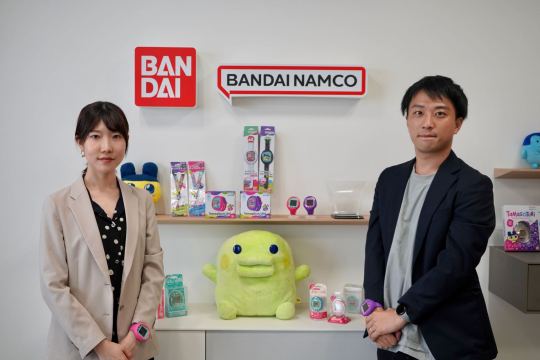
By now we all know that Bandai partnered with Amazon Web Services (AWS) when creating the Tamagotchi Uni. This fuels many features from over the air software updates, and more. In a recent interview with Yuri Okamoto (left) and Daisuke Sakamoto (right), they explain why Tamagotchi Uni uses AWS, and not other platforms such as Azure or Oracle.
According to Mr. Sakamoto, there are two main reasons for adopting AWS as a cloud platform that realizes a series of functions. The first is that AWS provided FreeRTOS, which was decided to be adopted as the OS of the Tamagotchi Uni. FreeRTOS is a real-time operating system kernel for embedded devices. This provides ease of cooperation with the cloud, especially AWS.
The goal for Tamagotchi Uni was to be able to get Tamagotchi users excited all over the world, which was critical during the planning stage.
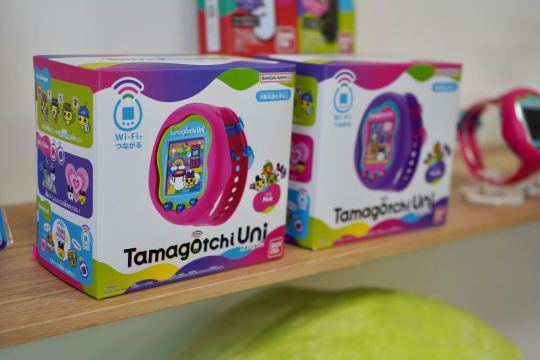
Second, AWS provided the security Bandai was looking for. This included device authentication. "When it comes to releasing it all over the world and distributing content on the same model, technically, in addition to device authentication, security that children are not exposed to malicious intent is important. Based on that, we compared and examined the IoT services of each company, and as a result, we contacted the AWS inquiry window," said Sakamoto.

"Tamagotchi has released a different series in Japan and overseas, and recently the ones for Europe and the United States have become popular. I think that the global visibility has also increased, and I wanted to provide content where Tamagotchi users from all over the world can get excited together here." (Mr. Okamoto).

Using AWS Bandai is also able to collect data on how children play with Tamagotchi. They do not collect personal information but they are able to measure which items are polar, and Bandai will make sure of that information in the future for content production.

"As a feature of products equipped with Wi-Fi and connected to the cloud, we can now see information such as how much it is played. I want to connect such information to the improvement of future play." (Mr. Sakamoto)
Check out the full article here.
#tamapalace#tamagotchi#tmgc#tamagotchiuni#tamagotchi uni#uni#tamatag#virtualpet#bandai#aws#amazon#monoist#yuriokamoto#yuri okamoto#daisukesakamoto#daisuke sakamoto
20 notes
·
View notes
Text
Building Robust LoRa Systems: Design & Testing Considerations for 2025
Introduction
Can a sensor in a remote area deliver trustworthy data for ten years on just one battery? Yes, using LoRa, but only if you build it correctly. LoRa (Long Range), developed by Semtech, has emerged as a powerful solution for enabling wide-area IoT connectivity with minimal energy consumption and infrastructure needs. While our previous blog introduced LoRa fundamentals, this guide delves deeper into LoRa system design, integration challenges, and robust testing strategies that ensure scalability and reliability.
LoRa’s physical layer and LoRaWAN protocol offer a secure and efficient framework for communication. However, real-world performance depends heavily on careful planning across aspects like power management, payload optimization, antenna tuning, and network topology. Developers need to make trade-offs between latency, range, data rate, and energy consumption depending on the specific application, such as smart metering, industrial telemetry, or agricultural sensing.


LoRa System Design Considerations
Frequency Band and Regional Compliance LoRa operates in unlicensed ISM bands: 868 MHz in Europe, 915 MHz in North America, and 433 MHz in Asia. Developers must align frequency planning with regional regulations and ensure compliance with transmission power and duty cycles.
Payload Optimization Payload sizes typically range from 51 to 222 bytes, depending on the spreading factor and regional limits. Designers should implement compact data formats like CBOR (Concise Binary Object Representation) or Google Protobuf to reduce overhead. This ensures compliance with airtime restrictions while maintaining critical data fidelity.
Power Consumption Management Efficient power usage is vital in battery-powered LoRa devices. Most nodes run on microcontrollers with 64KB or less RAM. Developers are encouraged to use lightweight RTOSes like FreeRTOS or Zephyr, which provide low-overhead task scheduling and energy-saving capabilities.
Transmission schedules must align with duty cycle limits in regions like the EU (1% in some subbands). Wake-up and sleep routines should be fine-tuned, and retry logic must implement exponential backoff to reduce congestion and save battery.
Security Architecture LoRaWAN supports AES-128 encryption for both network and application layers. However, securing the system also involves secure key provisioning, tamper-proof storage, and use of Secure Elements or HSMs (Hardware Security Modules). This prevents cloning, sniffing, and replay attacks in large deployments.
Antenna Selection and Placement RF performance is highly sensitive to antenna selection. For example:
Spring Antennas: Ideal for sub-100mW nodes.
Rubber Duck Antennas: Suitable for 500mW modules.
Magnetic Mount or Fiberglass Antennas: Best for 2W modules or outdoor gateways. Placement, orientation, and enclosure materials must be optimized through real-world RF testing and modeling.

Testing Strategies for LoRa Devices
Unit Testing Validate core software modules such as:
Data encoding & decoding
MAC layer behavior
Encryption and key management
Functional Testing Test end-to-end communication:
From sensor data acquisition
Through LoRa transmission
To gateway and cloud integration
Simulate conditions like signal loss, packet duplication, and gateway failure to ensure resilience.
Range and Field Testing Range testing should include both Line-of-Sight (LoS) and Non-Line-of-Sight (NLoS) environments:
Use GPS-enabled nodes to map signal strength (RSSI, SNR)
Test across different terrains and building densities
Deploy mobile test rigs to measure effective coverage
Power Profiling Using a coulomb counter or power analyzer, measure:
Sleep current
Wake-up burst current
Transmission duration
These measurements help estimate battery life under real-world usage.
Firmware Update Testing Bandwidth-efficient firmware updates are increasingly necessary:
Implement delta updates or compressed binaries
Consider alternate update paths via BLE or UART
Ensure safe rollback and power-fail recovery during OTA
Regulatory Compliance Testing Devices should comply with:
ETSI (Europe)
FCC (USA)
TELEC (Japan)
For custom designs, RF emissions, spurious harmonics, and duty cycle adherence must be tested in certified labs.

Key Technical Challenges in LoRa Development
Limited Throughput: LoRa isn’t suitable for high-speed applications. Developers should avoid excessive polling or data streaming.
Packet Collision Risks: High node density in shared ISM bands can increase collision rates. Solutions include Adaptive Data Rate (ADR) and Listen Before Talk (LBT).
Interoperability: Gateways and nodes must be tested across firmware versions and vendor implementations.

Use Case-Specific Optimization
Smart Agriculture: Schedule transmissions around irrigation cycles. Use solar + battery hybrid power for remote fields.
Smart Cities: Gateways on rooftops provide broad coverage. Use Class B devices for scheduled updates.
Industrial Monitoring: Use Class C nodes for instant alarms in gas leak detection.
Asset Tracking: Leverage triangulation via multiple gateways to localize indoor and outdoor assets.


Conclusion
Building a high-performing LoRa system goes beyond just hardware integration. It requires holistic design—from antenna selection and security architecture to payload tuning and range validation. Developers must rigorously test for power, compliance, and reliability to ensure deployment success.
With the rise of smart agriculture, remote industrial controls, and connected infrastructure, LoRa is becoming a key enabler for long-range IoT deployments.
At Silicon Signals, we help product teams build robust LoRa-based solutions—from hardware design, firmware development, to RF tuning and deployment support. Whether you’re prototyping a remote monitoring solution or scaling city-wide sensor networks, we ensure that your IoT system is efficient, secure, and future-ready.
Ready to deploy smarter, longer-lasting LoRa-based IoT systems? Our embedded and RF engineering experts are here to guide you from PoC to production. 📩 Let’s talk at [email protected] | 🌐 www.siliconsignals.io
#embeddedtechnology#embeddedsoftware#embeddedsystems#androidbsp#linux kernel#android#linuxdebugging#aosp#iot development services#iotsolutions
0 notes
Text
#Percepio#FreeRTOS#EmbeddedSystems#IoTDevelopment#SoftwareDebugging#TraceDiagnostics#RealTimeOperatingSystems#ArmCortexM#SoftwareObservability#TechInnovation#Timestech#PercepioView#SystemVisibility#electronicsnews#technologynews
0 notes
Text
Technoscripts: The Best Embedded Systems Training Institute in Pune
When it comes to mastering embedded systems, Technoscripts stands out as the Best embedded institute in Pune, a city renowned for its technological and educational advancements. Established in 2005, Technoscripts has earned a stellar reputation for delivering industry-focused, hands-on training in embedded systems, automotive electronics, and IoT. With a proven track record of transforming students into job-ready professionals, Technoscripts is the go-to choice for aspiring engineers. Here’s why Technoscripts is widely regarded as the best embedded systems training institute in Pune.
Comprehensive and Industry-Aligned Curriculum
Technoscripts offers a well-structured curriculum designed to meet the demands of the rapidly evolving embedded systems industry. Their flagship programs, such as the Embedded Course in Pune with Placements and the Automotive Embedded Course, cover essential topics like:
Microcontroller Programming: In-depth training on 8051, AVR, PIC, ARM, and STM32 microcontrollers.
Embedded C and C++: Core programming skills for developing efficient, real-time applications.
Real-Time Operating Systems (RTOS): Practical exposure to FreeRTOS and other RTOS frameworks.
Automotive Standards: Training on ISO 26262, MISRA, and CAN protocol for automotive applications.
IoT and Embedded Linux: Cutting-edge skills in IoT device development and Linux-based embedded systems.
The curriculum is regularly updated to align with industry trends, ensuring students are equipped with the latest tools and technologies used in companies like Bosch, NXP, and Texas Instruments.
Hands-On Learning with Live Projects
At Technoscripts, the focus is on practical, hands-on learning. Students work on live projects that simulate real-world challenges, such as designing embedded systems for automotive applications or IoT devices. The institute’s state-of-the-art labs are equipped with industry-standard tools like Keil, MPLAB, and hardware kits, allowing students to gain practical experience in:
Hardware interfacing and debugging
PCB design and prototyping
Sensor integration and communication protocols (I2C, SPI, UART)
This practical approach bridges the gap between theoretical knowledge and industry requirements, making graduates highly employable.
Expert Faculty with Industry Experience
Technoscripts boasts a team of experienced trainers with over a decade of industry expertise. These professionals bring real-world insights into the classroom, sharing practical knowledge and best practices. Their mentorship ensures that students not only understand concepts but also learn how to apply them in professional settings. Regular doubt-clearing sessions and personalized guidance further enhance the learning experience.
Unparalleled Placement Support
One of Technoscripts’ standout features is its 100% placement support. The institute has strong tie-ups with leading companies in the embedded systems and automotive sectors, including:
Tata Elxsi
KPIT Technologies
L&T Technology Services
Robert Bosch
The dedicated placement cell offers comprehensive support, including:
Resume Building: Guidance on crafting professional resumes tailored to industry standards.
Mock Interviews: Simulated interview sessions to boost confidence and communication skills.
Job Referrals: Direct connections to top recruiters through campus placements and job fairs.
Technoscripts’ placement record speaks for itself, with thousands of students securing roles as embedded systems engineers, firmware developers, and IoT specialists in top-tier companies.
Certifications and Recognition
Technoscripts is a NASSCOM-certified institute, adding credibility to its training programs. Upon course completion, students receive industry-recognized certificates that enhance their employability. The institute also offers NSDC-affiliated certifications, further validating the quality of training and aligning with national skill development standards.
Flexible Learning Options
Understanding the needs of students and working professionals, Technoscripts provides flexible learning modes, including:
Classroom Training: Interactive, in-person sessions at their Pune facility.
Online Training: Live, instructor-led virtual classes for remote learners.
Weekend Batches: Tailored for professionals balancing work and learning.
This flexibility ensures that anyone, from fresh graduates to experienced engineers, can upskill at their convenience.
Student-Centric Approach
Technoscripts prioritizes student success through a holistic approach. Beyond technical training, the institute offers:
Soft Skills Training: Sessions on communication, teamwork, and leadership to prepare students for corporate environments.
Career Counseling: Guidance on career paths and specialization choices in embedded systems.
Lifetime Support: Access to resources, alumni networks, and job assistance even after course completion.
Why Choose Technoscripts?
Technoscripts’ combination of a cutting-edge curriculum, hands-on training, expert faculty, and exceptional placement support sets it apart as the best embedded systems training institute in Pune. Whether you’re a fresh engineering graduate or a professional looking to upskill, Technoscripts equips you with the knowledge, skills, and opportunities to thrive in the competitive embedded systems industry.
Conclusion
For anyone aspiring to build a successful career in embedded systems, Technoscripts is the ultimate destination. With its industry-aligned training, practical approach, and unmatched placement support, the institute empowers students to turn their passion for technology into rewarding careers. Enroll at Technoscripts today, attend a demo class, and take the first step toward becoming an embedded systems expert!
0 notes
Text
Real-time Operating System Market Size, Share, Trends, Forecast & Growth Analysis 2034

Real-time Operating System (RTOS) market is undergoing a transformative shift as industries worldwide demand faster, more reliable, and deterministic computing systems. Expected to grow from $5.97 billion in 2024 to $12.21 billion by 2034, at a CAGR of 7.4%, RTOS solutions are at the core of embedded systems that power everything from automotive safety to industrial robotics. These systems ensure tasks are executed within strict timing constraints, making them indispensable for applications where precision, speed, and reliability are non-negotiable. As digital transformation accelerates, RTOS platforms are evolving to meet the needs of increasingly complex devices, connected environments, and automation-driven industries.
Click to Request a Sample of this Report for Additional Market Insights: https://www.globalinsightservices.com/request-sample/?id=GIS32475
Market Dynamics
The RTOS market is being powered by a convergence of technological advances and evolving industry requirements. One of the strongest drivers is the rise of the Internet of Things (IoT), which demands real-time data processing for effective decision-making. Industries such as automotive, healthcare, aerospace, and telecommunications are integrating RTOS into their systems for reliable and efficient operation.
Automotive, in particular, is a dominant force in the RTOS market, thanks to the proliferation of Advanced Driver Assistance Systems (ADAS), infotainment solutions, and autonomous vehicle development. Similarly, consumer electronics is experiencing a surge in RTOS demand, with smartwatches, home automation, and wearable health devices requiring real-time capabilities.
The integration of AI and machine learning with RTOS is transforming how systems interact with users and environments, enabling predictive analytics and smarter decision-making. Meanwhile, cloud computing and edge computing are creating new opportunities for hybrid RTOS models, allowing systems to function seamlessly across on-premise and cloud-based infrastructures.
Key Players Analysis
The competitive landscape of the RTOS market is rich and dynamic. Industry leaders like Wind River, Green Hills Software, and Microsoft are setting benchmarks through innovation and strategic collaborations. These companies focus on enhancing functionality, security, and scalability of their platforms to meet diverse industrial needs.
QNX Software Systems and FreeRTOS remain go-to choices for embedded developers due to their stability and widespread adoption across verticals. Other notable contributors like Micrium, Lynx Software Technologies, and ThreadX offer specialized solutions tailored to applications in aerospace, defense, and industrial automation.
Emerging players such as NexGen Systems, Tempo Tech, and Swift Ops are disrupting the market with modular and lightweight RTOS offerings. These newcomers are focusing on edge computing, AI compatibility, and open-source frameworks to gain traction among SMEs and startups.
Regional Analysis
North America leads the global RTOS market, primarily due to its robust infrastructure, early adoption of smart technologies, and a strong presence of industry pioneers. The United States contributes significantly, driven by demand from the automotive, aerospace, and defense sectors.
Europe follows closely, with Germany and France leading the region’s innovation in RTOS integration within advanced manufacturing and automotive systems. European industries prioritize safety, efficiency, and regulatory compliance — factors that make RTOS essential.
The Asia-Pacific region is experiencing rapid RTOS market expansion, fueled by industrial growth, increased IoT deployment, and rising digitalization. China and India are key contributors, investing heavily in smart cities, telecommunications, and healthcare systems.
Latin America and the Middle East & Africa are emerging players, showing steady adoption of RTOS in manufacturing, energy, and digital infrastructure projects. Countries like Brazil, Mexico, UAE, and South Africa are pushing digital agendas that rely on real-time computing technologies.
Recent News & Developments
The RTOS market has seen a surge in partnerships and technological enhancements. Wind River recently integrated AI-powered predictive maintenance tools into its VxWorks platform, aiming to improve performance in industrial settings. Green Hills Software announced a collaboration with Qualcomm to optimize automotive-grade RTOS for next-gen vehicles.
Open-source RTOS options such as FreeRTOS and Zephyr are gaining popularity, promoting innovation and reducing development costs. Meanwhile, regulatory compliance — particularly with standards like ISO/IEC 27001 — is influencing RTOS development across sectors that demand cybersecurity and data protection.
Edge computing is another rising trend, pushing RTOS vendors to optimize their solutions for low-latency, on-device data processing. Companies are also responding to environmental concerns by developing energy-efficient RTOS platforms, particularly for wearables and IoT devices.
Browse Full Report : https://www.globalinsightservices.com/reports/real-time-operating-system-market/
Scope of the Report
The Real-time Operating System market holds immense potential as technology evolves and real-time processing becomes essential across multiple verticals. With applications in autonomous vehicles, industrial automation, telecommunications, healthcare, and aerospace, RTOS is poised to play a foundational role in modern computing.
This report evaluates the market across various dimensions, including deployment types (cloud, on-premise, hybrid), end users, functionalities, and geographies. It offers insights into technological innovations, strategic alliances, and regulatory trends that shape the RTOS landscape. Companies that align with trends such as AI integration, edge computing, and open-source adoption are expected to drive the next phase of market growth.
#rtosmarket #embeddedtech #realtimesystems #iotintegration #automotiverobotics #smartelectronics #aiandedge #digitalsupplychain #techinnovation2034 #cloudbasedrtos
Discover Additional Market Insights from Global Insight Services:
AI Model Risk Management Market : https://www.globalinsightservices.com/reports/ai-model-risk-management-market/
3D Mapping and Modeling Market : https://www.globalinsightservices.com/reports/3d-mapping-and-modeling-market/
Accounts Receivable Automation Market : https://www.globalinsightservices.com/reports/accounts-receivable-automation-market/
Ad Fraud Detection Tools Market : https://www.globalinsightservices.com/reports/ad-fraud-detection-tools-market/
Advanced (3D/4D) Visualization Systems Market : https://www.globalinsightservices.com/reports/advanced-3d-4d-visualization-systems-market/
About Us:
Global Insight Services (GIS) is a leading multi-industry market research firm headquartered in Delaware, US. We are committed to providing our clients with highest quality data, analysis, and tools to meet all their market research needs. With GIS, you can be assured of the quality of the deliverables, robust & transparent research methodology, and superior service.
Contact Us:
Global Insight Services LLC 16192, Coastal Highway, Lewes DE 19958 E-mail: [email protected] Phone: +1–833–761–1700 Website: https://www.globalinsightservices.com/
0 notes
Note
As you are a robot-girl What operating system do you run on yourself?
Im mostly analogue except for the small upgrade that now manages my passive life support that runs off freeRTOS
Really wish I could just run apps natively, tired of running out of phone battery
11 notes
·
View notes
Text
FreeRTOS Design Routine Based on i.MX9352 Development Board M Core
In the embedded systems, the application of embedded real-time operating systems (RTOS) is becoming increasingly widespread. Using an RTOS can utilize CPU resources more reasonably and efficiently. As a lightweight and mature real-time operating system kernel, FreeRTOS has complete core functions, including task management, time management (such as delays and timers), synchronization mechanisms (semaphores, mutexes), inter-process communication (message queues), and so on. These features enable it to meet the needs of small and medium-sized embedded systems with relatively limited resources.
i.MX 9352 is a new generation of lightweight edge AI processor launched by NXP, which integrates 2 x Cortex-A55 cores and 1 x Cortex-M33 real-time core. Its architecture design fully reflects the balance between real-time and complex task processing capabilities. To help developers fully leverage the real-time capabilities of the i.MX 9352 M33 core, the FreeRTOS examples provided in the accompanying M-core SDK package are divided into two categories. One category introduces the features of FreeRTOS system components, such as semaphores, mutexes, and queues. The other category shows how to use peripheral interfaces in FreeRTOS. Examples from each of these two categories are selected for demonstration.
▊ Demo platform: Forlinx Embedded OK-MX9352-C Development Board
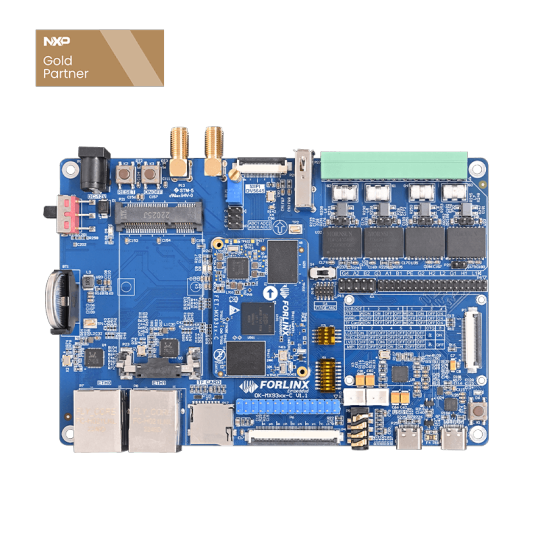
1. FreeRTOS-generic
The sample code of FreeRTOS features supported by the Forlinx Embedded OK-MX9352-C is as follows:
freertos_event: Demonstration Routine for Task Event
freertos_queue: Demonstration routine for implementing inter-task communication using queue messages
freertos_mutex: Routine for using mutexes
freertos_swtimer: Usage of software timers and their callbacks.
freertos_tickless: Routine for delayed wake-up using LPTMR or wake-up by hardware interrupt.
freertos_generic: Demonstration routine for the combined use of tasks, queues, software timers, tick hooks, and semaphores.
Since the FreeRTOS_generic routine uses many FreeRTOS features, let's focus on analyzing this routine.
(1)Software implementation
The content of the example program includes: task creation, queues, software timers, system tick clocks, semaphores, and exception handling. Specifically:
Task creation:
The main function creates three tasks: a queue sending task, a queue receiving task, and a semaphore task.// Create the queue receiving task if (xTaskCreate(prvQueueReceiveTask, "Rx", configMINIMAL_STACK_SIZE + 166, NULL, mainQUEUE_RECEIVE_TASK_PRIORITY, NULL) != pdPASS) // Create the queue sending task if (xTaskCreate(prvQueueSendTask, "TX", configMINIMAL_STACK_SIZE + 166, NULL, mainQUEUE_SEND_TASK_PRIORITY, NULL) != pdPASS) // Create the semaphore task if (xTaskCreate(prvEventSemaphoreTask, "Sem", configMINIMAL_STACK_SIZE + 166, NULL, mainEVENT_SEMAPHORE_TASK_PRIORITY, NULL) != pdPASS)
Queues:
The queue sending task blocks for 200ms and then sends data to the queue. The queue receiving task blocks to read from the queue. If the data is read correctly, it prints the current number of received items in the queue.// The queue sending task blocks for 200ms and then sends data to the queue static void prvQueueSendTask(void *pvParameters) { TickType_t xNextWakeTime; const uint32_t ulValueToSend = 100UL; xNextWakeTime = xTaskGetTickCount(); for (;;) { // The task blocks until the 200ms delay ends. vTaskDelayUntil(&xNextWakeTime, mainQUEUE_SEND_PERIOD_MS); // Send data to the queue. A blocking time of 0 means it will return immediately when the queue is full. xQueueSend(xQueue, &ulValueToSend, 0); } } //The queue receives the task, and the task is blocked to read the queue. If the data is read correctly, the number received by the queue at this time is printed. static void prvQueueReceiveTask(void *pvParameters) { uint32_t ulReceivedValue; for (;;) { //The task keeps blocking until data is read from the queue xQueueReceive(xQueue, &ulReceivedValue, portMAX_DELAY); //The queue data is consistent with the sending, and the queue receiving quantity+1 outputs the queue receiving quantity at this time if (ulReceivedValue == 100UL) { ulCountOfItemsReceivedOnQueue++; PRINTF("Receive message counter: %d.\r\n", ulCountOfItemsReceivedOnQueue); } } }
Software timers:
Set the software timer period to 1 second. When the time is up, call the callback function, record the number of times, and print it via the serial port.// Create a software timer task with a time of 1 second and cyclic operation. xExampleSoftwareTimer = xTimerCreate( "LEDTimer", mainSOFTWARE_TIMER_PERIOD_MS, pdTRUE, (void *)0, vExampleTimerCallback); //Start the software timer xTimerStart(xExampleSoftwareTimer, 0); //Callback function static void vExampleTimerCallback(TimerHandle_t xTimer) { //Enter the callback function once every 1s, and the count increases ulCountOfTimerCallbackExecutions++; PRINTF("Soft timer: %d s.\r\n", ulCountOfTimerCallbackExecutions); }
System tick clock:
Set the task tick interrupt frequency by setting configTICK_RATE_HZ in the FreeRTOSConfig.h file. When starting the task scheduler, the system will calculate the value to be written to the tick counter according to another variable configCPU_CLOCK_HZ (CPU frequency) and start the timer interrupt.
// Set the system tick clock to 1000/200 = 5ms #define configTICK_RATE_HZ ((TickType_t)200)
Semaphores:
In each system tick clock interrupt, call the function vApplicationTickHook. After accumulating 500 times, which is 500 * 5ms = 2.5s, send a semaphore. After the semaphore task acquires the semaphore, it counts and prints the accumulated number of times.// The system tick is 5ms. Release the event semaphore every 500 * 5ms = 2.5s. void vApplicationTickHook(void) { BaseType_t xHigherPriorityTaskWoken = pdFALSE; static uint32_t ulCount = 0; ulCount++; if (ulCount >= 500UL) { //Release the event semaphore in the interrupt xSemaphoreGiveFromISR(xEventSemaphore, &xHigherPriorityTaskWoken); ulCount = 0UL; } } //The task blocks and waits for the semaphore. After receiving, the number of receiving times increases and is printed through the serial port. static void prvEventSemaphoreTask(void *pvParameters) { for (;;) { //Task blocks until semaphore can be acquired if (xSemaphoreTake(xEventSemaphore, portMAX_DELAY) != pdTRUE) { PRINTF("Failed to take semaphore.\r\n"); } //Accumulate the number of times the semaphore is received ulCountOfReceivedSemaphores++; PRINTF("Event task is running. Get semaphore :%d \r\n",ulCountOfReceivedSemaphores); } }
Exception handling:
When memory allocation fails, a stack error occurs, or a task is idle, the program enters the corresponding function. Users can add corresponding handling functions.// Memory allocation failure function. When memory allocation fails, the program enters this function. void vApplicationMallocFailedHook(void) { for (;;) ; } //Stack error check function, which is entered when stack overflow occurs void vApplicationStackOverflowHook(TaskHandle_t xTask, char *pcTaskName) { (void)pcTaskName; (void)xTask; for (;;) ; } // Idle task, with the lowest priority and no practical significance. It's just to keep the CPU busy. Users can add their own functions. void vApplicationIdleHook(void) { volatile size_t xFreeStackSpace; xFreeStackSpace = xPortGetFreeHeapSize(); if (xFreeStackSpace > 100) { } }
(2)Experimental Phenomenon Part
① Compile the program: Manually load the M-core program in U-Boot.
② Queue: Every 200 milliseconds, the sending task of the queue sends data, and the receiving task of the queue retrieves data. The receiving task transitions from the blocked state to the running state and prints the count.
③ Software timer: Every 1s, when the time is up, the callback function is called, and the count is printed.
④ Semaphore: Every 5ms, the system clock tick interrupt calls a function. After more than 500 times, the semaphore is released. The semaphore task acquires the semaphore, changes from the blocked state to the running state, and prints the count.
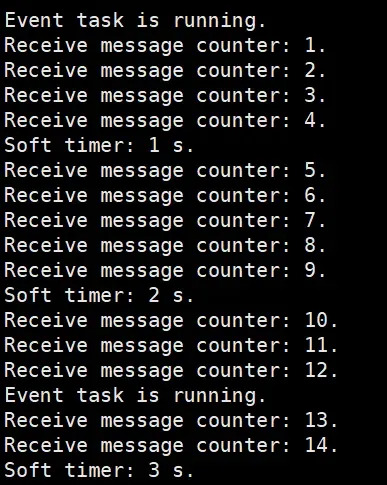
2. FreeRTOS-Peripherals
The Forlinx Embedded OK-MX9352-C development board supports using FreeRTOS to drive various peripherals. The following are some example codes:
freertos_uart: FreeRTOS UART demonstration routine
freertos_lpi2c_b2b: FreeRTOS I2C demonstration routine
freertos_lpspi_b2b: FreeRTOS SPI demonstration routine
Since the freertos_uart routine uses typical FreeRTOS features, focus on analyzing this routine.
(1) Software implementation
The example program content includes: serial port initialization task, serial port sending task, and serial port receiving task. Specifically:
Serial port initialization task:
It mainly includes the initialization of serial port peripherals, sending and receiving mutexes, and sending and receiving event groups. The initialization of serial port peripherals has been demonstrated in the bare-metal running serial port example, so it will not be detailed here.// Create a serial port sending mutex. handle->txSemaphore = xSemaphoreCreateMutex(); // Create a serial port receiving mutex. handle->rxSemaphore = xSemaphoreCreateMutex(); // Create a flag group sending events handle->txEvent = xEventGroupCreate(); // Create a flag group receiving events handle->rxEvent = xEventGroupCreate();
Serial port sending:
The semaphore is obtained before sending, the sending process is started, and the sending completion event flag is set in the interrupt. After acquiring the event, the send task releases the send semaphore.//1 Get the send semaphore if (pdFALSE == xSemaphoreTake(handle->txSemaphore, 0)) { return kStatus_Fail; } handle->txTransfer.data = (uint8_t *)buffer; handle->txTransfer.dataSize = (uint32_t)length; //2 blocking transmission status = UART_TransferSendNonBlocking(handle->base, handle->t_state, &handle->txTransfer); if (status != kStatus_Success) { (void)xSemaphoreGive(handle->txSemaphore); return kStatus_Fail; } // 3. Wait for the event of transmission completion ev = xEventGroupWaitBits(handle->txEvent, RTOS_UART_COMPLETE, pdTRUE, pdFALSE, portMAX_DELAY);// Wait and evaluate multiple event flags if ((ev & RTOS_UART_COMPLETE) == 0U) { retval = kStatus_Fail; } // 4 Transmission completed, release the transmission semaphore. if (pdFALSE == xSemaphoreGive(handle->txSemaphore)) // Release the transmission semaphore. { retval = kStatus_Fail; }
Serial port receiving:
Before receiving, obtain the semaphore, call the serial port receiving function, and set the event flag in the interrupt. After the receiving task obtains the event, release the receiving semaphore.// 1. Obtain the receiving semaphore. if (pdFALSE == xSemaphoreTake(handle->rxSemaphore, portMAX_DELAY)) { return kStatus_Fail; } handle->rxTransfer.data = buffer; handle->rxTransfer.dataSize = (uint32_t)length; //2 serial port receiving function status = UART_TransferReceiveNonBlocking(handle->base, handle->t_state, &handle->rxTransfer, &n); if (status != kStatus_Success) { (void)xSemaphoreGive(handle->rxSemaphore); return kStatus_Fail; } //3 Obtain the receiving event ev = xEventGroupWaitBits(handle->rxEvent,RTOS_UART_COMPLETE | RTOS_UART_RING_BUFFER_OVERRUN | RTOS_UART_HARDWARE_BUFFER_OVERRUN, pdTRUE, pdFALSE, portMAX_DELAY); // Wait and check the event bit indicating the completion of receiving // 3.1 Hardware receiving error if ((ev & RTOS_UART_HARDWARE_BUFFER_OVERRUN) != 0U) { UART_TransferAbortReceive(handle->base, handle->t_state); (void)xEventGroupClearBits(handle->rxEvent, RTOS_UART_COMPLETE); // Clear the event bit indicating receiving completion. retval = kStatus_UART_RxHardwareOverrun; local_received = 0; } //3.2 Receiving buffer overload error else if ((ev & RTOS_UART_RING_BUFFER_OVERRUN) != 0U) { UART_TransferAbortReceive(handle->base, handle->t_state); (void)xEventGroupClearBits(handle->rxEvent, RTOS_UART_COMPLETE); // Clear the event bit indicating receiving completion. retval = kStatus_UART_RxRingBufferOverrun; local_received = 0; } //3.3 Receiving completed else if ((ev & RTOS_UART_COMPLETE) != 0U) { retval = kStatus_Success; local_received = length; } else { retval = kStatus_UART_Error; local_received = 0; } //4. Release the received signal quantity if (pdFALSE == xSemaphoreGive(handle->rxSemaphore)) { retval = kStatus_Fail; }
(2)Experimental Phenomenon Part
① Compile the program and manually load the M-core program in U-Boot.
② After the device is powered on, the serial port prints the program information. At this time, input 4 characters via the keyboard, and the M-core debugging serial port will echo. Repeating the input and echo of characters proves that the program runs successfully.

The above is an example demonstration of FreeRTOS software design on the M-core of the Forlinx Embedded i.MX 9352 development board. Hope it can be helpful to all engineer friends.
0 notes
Text
Internet of Things (IoT) Operating Systems Market : Size, Trends, and Growth Analysis 2032
As connected devices increasingly define how the world functions, the digital backbone supporting this transformation lies in the operating systems specifically tailored for the Internet of Things (IoT). These lightweight, real-time platforms enable billions of sensors, actuators, and devices to communicate, compute, and collaborate seamlessly. The rapidly advancing Internet of Things (IoT) Operating Systems Market has emerged as a critical foundation for powering smart environments in homes, cities, industries, and beyond.
IoT Operating Systems (OS) are specialized software platforms designed to manage hardware and software resources in devices with constrained processing power, memory, and energy capacity. Unlike conventional OS used in smartphones or computers, IoT OS are optimized to run on microcontrollers and embedded systems that form the core of IoT networks. Their ability to deliver real-time processing, low-latency communication, and secure data handling makes them indispensable in connected ecosystems.
Market Overview
The Internet of Things (IoT) Operating Systems Market was valued at USD 789 million in 2024, and is projected to grow at a CAGR of 40.5% from 2025 to 2032. This exponential growth is driven by the widespread adoption of IoT in smart homes, wearables, industrial automation, automotive systems, healthcare, and agriculture. The need for energy efficiency, seamless interoperability, and enhanced security in billions of devices has fueled the demand for robust IoT operating systems.
The market encompasses a variety of operating system architectures—from open-source microkernels to proprietary platforms—each tailored for specific performance benchmarks and industry use cases.
Key Market Drivers
1. Explosion in IoT Device Deployment
With over 30 billion IoT devices expected to be in use by 2030, the volume and diversity of endpoints—ranging from thermostats to autonomous vehicles—necessitate lightweight, scalable OS platforms. Each device requires an operating system capable of handling communication protocols, data transmission, and local processing, often with limited power and memory. This massive proliferation drives the demand for IoT OS that can operate under constrained conditions.
2. Need for Real-Time Processing and Edge Computing
IoT environments often demand real-time decision-making, particularly in industrial and medical contexts. For example, predictive maintenance in smart factories or remote patient monitoring in healthcare relies on millisecond-level responsiveness. IoT operating systems like FreeRTOS, Zephyr, and RIOT are engineered for real-time operations and efficient multi-threading, allowing edge devices to process data locally without relying solely on cloud-based systems.
3. Rise of Smart Cities and Industrial IoT (IIoT)
The push toward smart urban infrastructure—featuring intelligent traffic systems, waste management, and public safety—is accelerating the deployment of edge-based sensors and actuators. Similarly, IIoT applications such as robotics, asset tracking, and condition monitoring in factories require dependable OS platforms that can operate autonomously and securely at scale. IoT OS enables such distributed intelligence, supporting large-scale deployments with minimal latency.
4. Security and Device Management
Security is a fundamental concern in the IoT ecosystem. Compromised devices can become entry points for cyberattacks, data breaches, and system failures. IoT operating systems must incorporate advanced features such as secure boot, encrypted communication, and over-the-air (OTA) updates. As the threat landscape evolves, vendors are integrating robust security protocols within the core of their OS offerings.
Device management is equally crucial—especially in enterprise and industrial scenarios where thousands of devices may require remote configuration, monitoring, and firmware updates. Modern IoT OS platforms facilitate centralized control through APIs and cloud integration, simplifying large-scale management.
Application Landscape
Consumer IoT: Smart home devices such as lighting, thermostats, voice assistants, and appliances require ultra-low-power OS platforms to manage data exchange and device functionality. These devices also integrate with mobile and cloud apps, relying on OS to ensure secure and smooth operation.
Healthcare: IoT OS are used in wearables, patient monitors, and smart diagnostic tools that capture and process vital signs, enabling real-time medical interventions. The operating system must support secure data transmission and comply with regulatory standards like HIPAA.
Automotive and Transportation: Modern vehicles utilize IoT OS in advanced driver-assistance systems (ADAS), infotainment units, and vehicle-to-everything (V2X) communications. These OS platforms ensure fast processing and secure connectivity under real-world driving conditions.
Industrial IoT (IIoT): Applications include predictive maintenance, energy optimization, supply chain management, and safety monitoring. Real-time data processing and interoperability are vital, demanding highly reliable OS frameworks.
Agriculture: IoT OS power smart irrigation, soil monitoring, and autonomous drones used in precision farming. Devices must be rugged, energy-efficient, and capable of long-range communication—features that the right OS makes possible.
Regional Insights
North America dominates the market due to early adoption of IoT technologies, strong presence of key tech giants, and investments in smart city projects. The U.S. leads with widespread deployment in industrial automation, healthcare, and consumer electronics.
Europe follows with a focus on sustainable smart infrastructure, Industry 4.0 initiatives, and regulatory support for secure IoT deployments. Countries like Germany, France, and the UK are spearheading developments in automotive IoT and renewable energy systems.
Asia-Pacific is the fastest-growing region, fueled by massive consumer electronics production in China, India, and South Korea. Rapid urbanization, supportive government policies, and booming industrial sectors are accelerating adoption across the region.
Latin America and MEA are emerging markets where smart agriculture, utility monitoring, and transport management systems are creating demand for efficient IoT platforms.
Key Players and Competitive Landscape
Prominent players in the IoT Operating Systems Market are focusing on platform development, ecosystem expansion, and open-source collaboration to capture market share. Key industry contributors include:
Microsoft Corporation – Offers Azure RTOS, a real-time operating system designed for low-power IoT devices with integrated cloud connectivity via Microsoft Azure.
Google LLC – Provides Android Things, optimized for embedded devices and compatible with Google’s AI and machine learning capabilities.
IBM Corporation – Promotes cloud integration and device management through IBM Watson IoT and supports several open-source IoT operating systems.
Amazon Web Services (AWS) – Provides FreeRTOS, one of the most widely adopted real-time operating systems, optimized for microcontrollers and tightly integrated with AWS cloud services.
Intel Corporation – Contributes to the development of open-source OS like Zephyr and supports edge computing infrastructure for smart manufacturing and robotics.
Huawei Technologies Co. Ltd. – Offers LiteOS, a lightweight operating system for smart devices, widely used in Asia and integrated with Huawei’s IoT platforms.
These companies are investing heavily in improving interoperability, edge AI support, security protocols, and developer tools to enhance their operating systems and secure competitive advantages.
Market Trends
Open-Source OS Platforms: Growing developer communities are contributing to OS like Zephyr, RIOT, and Mbed, making them more feature-rich and accessible.
Edge AI Integration: IoT OS are being enhanced to support machine learning models that run on-device, enabling smarter, autonomous decision-making.
OTA Updates and Remote Management: Advanced OS are offering seamless firmware upgrades and centralized fleet control, essential for large-scale IoT implementations.
Cross-Platform Compatibility: Demand for interoperability between various OS, hardware platforms, and cloud ecosystems is shaping the evolution of IoT software stacks.
Browse more Report:
Automotive MLCCs Market
Automotive Start-Stop Battery Market
Automotive Slack Adjuster Market
Automotive Rear Cross Traffic Alert Market
Automotive Industry Consulting Services Market
0 notes